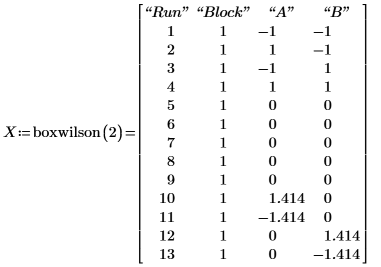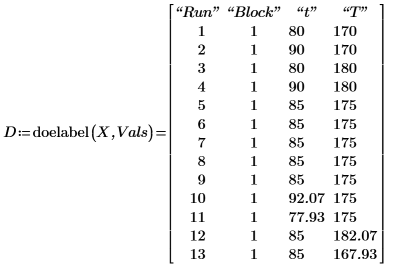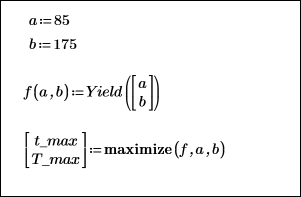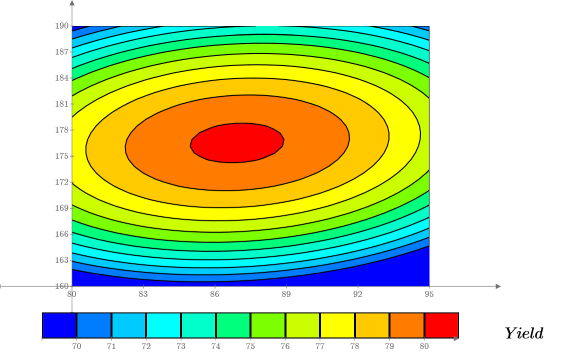Example: Second-Order Response Surface
Use the boxwilson, polyfitc, and polyfit functions to design an experiment and to create a model of the process being studied. Use a solve block to find the maximum yield predicted by the model.
1. Define a boxwilson design matrix.

2. Define the real values for A (reaction time in minutes) and B (temperature in Fahrenheit) which are the natural variables for the chemical process under study.

3. Call the doelabel function to convert the coded values of the design matrix into the real values of the natural variables.

4. Record the yield of the chemical process for each run.

5. Call polyfitc to carry out a second-order polynomial regression with the coded values.

6. Extract the coefficients of regression from the output of polyfitc.

7. Create a function of coded values that models the chemical reaction. Use this function to predict the yield at A=-1 and B=1.


8. Call polyfit to create a function of real values that models the chemical reaction. Use this function to predict the yield at t=80 min and T=170F.


As expected, the calculated yield is the same as in step 7.
9. Use a solve block to find the maximum yield.


10. Use a contour plot to visualize how the yield changes around t_max and T_max.




Reference
Montgomery, D.C., Design and Analysis of Experiments, 5th ed., John Wiley & Sons, New York, 2001, pp. 442.